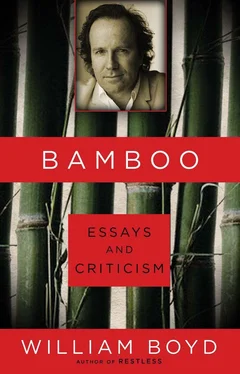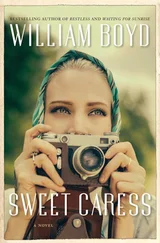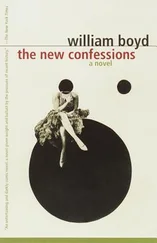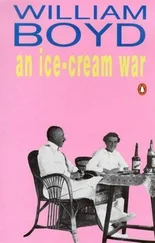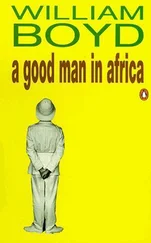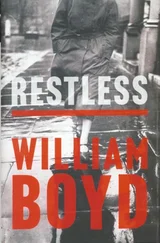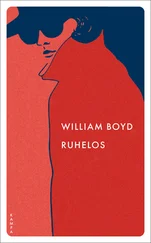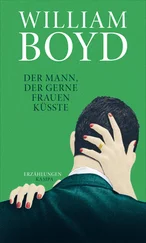So what happened? I think that, usually, the shock of encountering real life stimulated a hasty course of unlearning. Most public schoolboys have to start a stringent programme of re-education almost as soon as the school gates close behind them. This assumes, of course, that the society in which you are compelled to mix operates under different codes. There are still many walks of life in contemporary Britain where the transition from schoolboy to adult is imperceptible — the attitudes that served you well at eighteen will see you nicely through to retirement.
When I left school I went to live on my own in France for a year. The signal inadequacies of my education swiftly presented themselves to me, and I suppose it was then that I began to look back on the strange institution in which I had spent half my life and to wonder at it.
I often found the focus of my thoughts coming round to one boy, a little younger than me, who had been in my house. This person, a sallow, weak boy called Gibbon, had been hated by everybody, myself included. I have no idea why; he was just very unpopular. He was never really persecuted, just spurned. Sometimes a gang would descend on him, demolish his desk, push him around, but most of the time the punishment was verbal. He was a whipping-boy for the house. He appeared to take it in reasonable spirit, was not abjectly miserable, and so there seemed no real cause to change attitudes. He had no friends and walked everywhere by himself. He was so disdained that even other unpopular boys in the house would not associate with him in case the taint was contagious.
My own school career was, in a banal way, a successful one, comparatively untroubled and orthodox, but I kept wondering what it had been like for Gibbon during his five years. When he went home in the holidays and his parents asked him how he was getting on at school, what did he say? And, more important, what effect would those five years have on him as an adult? Would he shrug them off? Struggle on regardless? Carry them like a yoke? When I looked at my contemporaries, boys who had had a far easier time, and saw them, years later, still living in the heavy shadow of their school days, still wrestling with aspects of their personalities that were somehow corrupted, undeveloped or warped, I doubted, somehow, that old Gibbon would be the breeziest and most carefree of fellows.
1985
It was a piece of metal, dark grey, about three inches by one inch, with curious scalloped edges which resembled the crude working of a stone-age tool. In fact it was a chunk of German shell casing which, one night in October 1917, in no man’s land, during the third Battle of Ypres, hit my grandfather — William Boyd — full in the back.
I have held that piece of shrapnel in my hand but I never had the chance to ask my grandfather — who survived this incident and the war — what it was like, because he died in 1952 when I was a week old. I never had the chance to ask him what was going through his mind during that wiring party (he was a sergeant in the Royal Engineers) as he unspooled fresh rolls of barbed wire in front of the British trenches, freezing motionless as the starshells came over from the German lines. Perhaps he heard the unmistakable noise of incoming artillery — he had been two years on the Western Front by 1917—and wondered, as everybody must have done, if this time his number might be up.
When he came to, when he realized he was only wounded — not about to die, not hideously maimed — perhaps he thought of his brother, Sandy, who had also been wounded, a year previously, in August 1916, during the Battle of the Somme. The Boyd brothers were both sergeants, but Sandy was in the Australian Army — the Australian Imperial Force — having emigrated to Australia in 1914, only to be sent back to Europe two years later to fight for the Empire. Sandy’s wounds earned him a medal — the DCM — as he had received them rallying his company in the face of a German counterattack at Mouquet Farm, organizing the remains of the company (all the officers were killed and wounded) and leading them out of harm’s way. Sandy was shipped back to Australia to convalesce and was duly presented with his medal by the Governor General at a parade in a park in Melbourne. The two brothers never saw each other again — Sandy died of a heart attack in 1940.
What united them, and what united huge numbers of their generation, was the unique and terrible experience of the Great War. It wasn’t actually very long ago, the First World War, just over eighty years, yet it seems to be preserved in our contemporary memories — as the twentieth century slips into the twenty-first — as something almost ancient, a mythic tale of bygone times. Those monochrome or sepia images still have the power to haunt and move, but I think we forget just how proximate they are and how the events they reflect have shaped and still shape our own times.
I remember, as a child, hearing stories about my grandfather’s and my great-uncle’s war experiences as I weighed in my hand the piece of shrapnel that finally got my grandfather out of the trenches. He was lucky, incredibly lucky, hindsight tells us, just as his brother Sandy was lucky — the only physical reminder of their respective ordeals was patches of fading scar tissue — though no one can really evaluate what the psychological wear and tear would have been; memories and images that would undoubtedly prove a more enduring legacy of their experience of battle. And perhaps my generation is the last one to feel any real closeness to those world-shattering events of 1914-18. It was oddly destabilizing, as I tried to track down an early photograph of my grandfather the other day, to hear one of my uncles referring to him casually as “Dad.” Indeed, had William Boyd senior lived a few years longer (he was only sixty-two when he died) I might have had my own memories of that stout, mustachioed figure I have seen in family photographs. Not merely my grandfather, after all, but a man who managed to survive two years in the trenches.
I think it is that closeness, that familial proximity, that provoked my own abiding interest in the Great War. For me, fundamentally, it is the un-knowingness, the unimaginability of that conflict that triggers the imagination. We have the newsreel images and the photographs, we have the memoirs, the regimental histories, the poetry and so on, but despite all this evidence the questions always remained only partially answered: what was it really like?
I can’t speak for other novelists who have taken the Great War as their subject but sometimes the best way to arrive at the truth is to lie — to invent, to fictionalize. The curious alchemy of art — rather than the diligent assembling of documentary fact — can be a swifter and more potent route to understanding and empathy than the most detailed photographs or the most compendious documentation. You have to do your homework, sure — authenticity has to be striven for — but in the end it is the fecundity and idiosyncrasy of the novelist’s imagination that will make the thing work — or not.
I first wrote about the First World War in my 1982 novel An Ice-Cream War. This was a forgotten corner of the Great War, an interminable struggle between the British and German colonies in East Africa (mirroring the larger one in Europe) — a surreal but bloody little affair that resembled the counterinsurgency conflicts of the sixties and seventies more than the traditional image of huge, immobile armies facing each other across 600 miles of trenches.
I turned to the Western Front proper in my novel The New Confessions, which was published in 1987. Here I tackled the battle where my grandfather had been wounded, the third Battle of Ypres, or Passchen-daele, as it is more popularly known. In the course of my research I spent weeks in the Imperial War Museum in London, watching contemporary newsreel pictures.
Читать дальше
